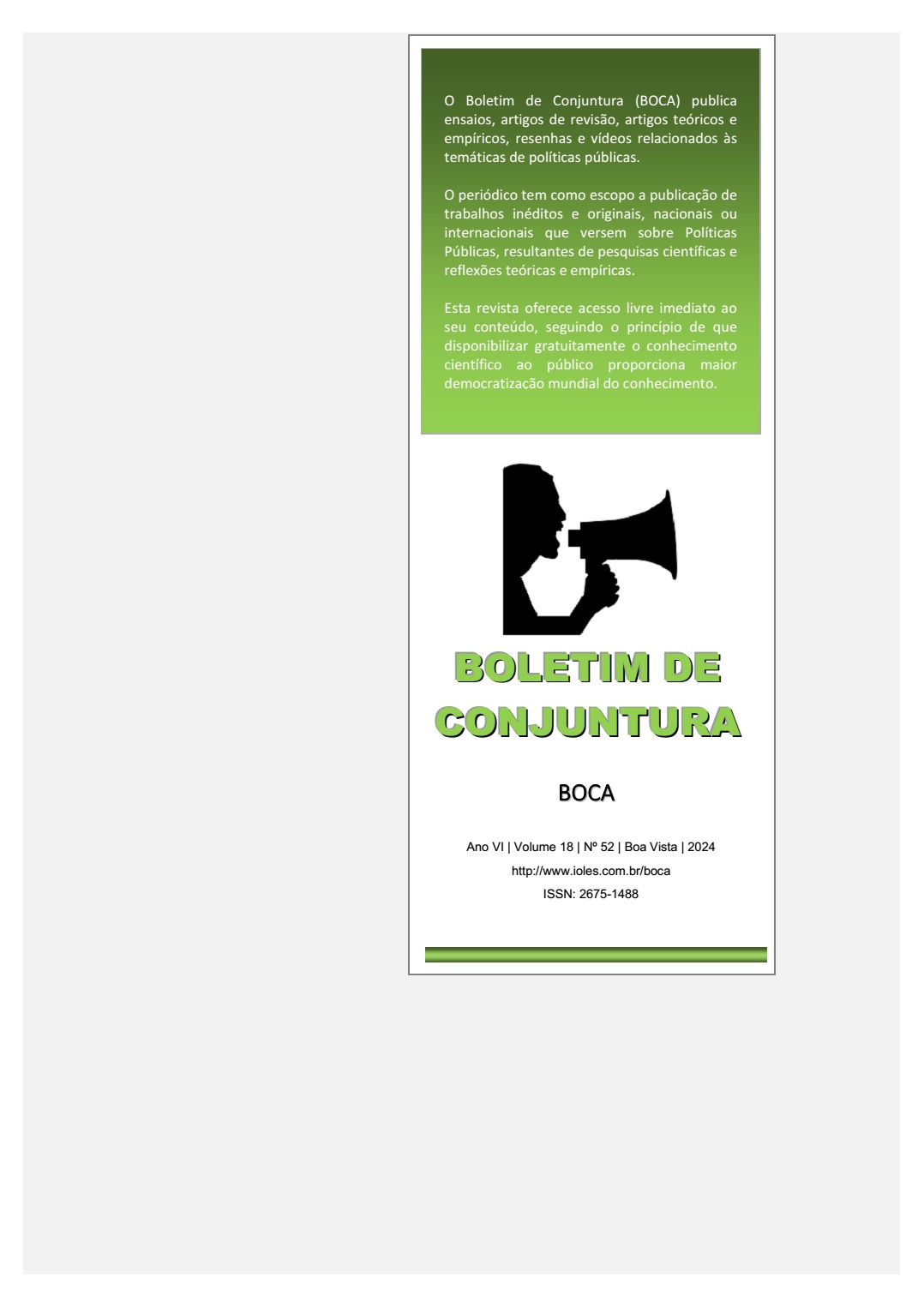DATA MINING AS AN ANALYSIS TOOL ABOUT ANONYMOUS COMPLAINTS TO THE CIVIL POLICE OF THE FEDERAL DISTRICT
Main Article Content
Abstract
Law enforcement agencies face a complex task in collecting information and accurately and efficiently analyzing progressive volumes of crime data. Data mining, also known as knowledge extraction, allows analysts to explore large databases quickly and accurately, reducing response times in strategic actions to repress and prevent criminal events. The objective of this study is to analyze how the use of data mining tools can reveal important information arising from anonymous complaints, which are managed by the Complaints Control Division (DICOE) of the Civil Police of the Federal District (PCDF). The Whistleblower Control System (SCONDE) database was a source of quantitative survey research, with a time frame from 2018 to 2022. Structured observation in panels, tables and statistical graphics from the business intelligence platform called QlikView. Using this solution, as an analysis instrument, it was possible to correlate several variables that structure anonymous complaints, allowing insights to be generated so that PCDF managers can act strategically to control crime.
Article Details

This work is licensed under a Creative Commons Attribution 4.0 International License.
Copyright (c). Conjuncture Bulletin (BOCA)
This work is licensed under a Creative Commons Attribution 4.0 International License.
References
ALVES, R. D. R.; SILVA, M. L. M. “Tecnologias da informação e comunicação na garantia de direitos das mulheres em situação de violência doméstica”. Revista Brasileira de Segurança Pública, vol. 17, n. 1, 2023.
ATES, E. C.; BOSTANCI, G. E.; GUZEL, M. S. G. “Big data, data mining, machine learning, and deep learning concepts in crime data”. Journal of Penal Law and Criminology, vol. 8, n. 2, 2020.
BRASIL, Departamento de Proteção, Defesa e Direitos Animais. Brasília: Ministério do Meio Ambiente, 2023. Disponível em: . Acesso em: 08/01/2023.
CARMO, S. A.; MATOS, Á. K. P.; SILVA, A. B. “A criminalidade nas zonas urbanas de Boa Vista/RR (2019-2021)”. Boletim de Conjuntura (BOCA), vol. 15, n. 43, 2023.
CRESWELL, J. W. Projeto de Pesquisa: métodos qualitativo, quantitativo e misto. Porto Alegre: Editora Artmed, 2010.
DISTRITO FEDERAL. Decreto n. 26.321, de 26 de outubro de 2005. Brasília: PCDF, 2005. Disponível em: . Acesso em: 04/02/2024.
FENG, M. et al. “Big Data Analytics and Mining for Effective Visualization and Trends Forecasting of Crime Data”. IEEE Access, vol. 7, 2019.
FERREIRA, V. F. M. Spotters e inteligência policial: estudo exploratório no comando distrital de Braga. Portugal: RCAAP, 2023.
GRAEBIN, F. P. “Análise de vínculos na investigação dos crimes de lavagem de dinheiro”. Conhecimento Interativo, vol. 16, n. 1, 2022.
HAASE, J. et al. "Get Real Get Better: A Framework for Developing Agile Program Management in the U.S. Navy Supported by the Application of Advanced Data Analytics and AI". Technologies, vol. 11, n. 6, 2023.
HAN, J.; PEI, J.; TONG, H. Data mining: concepts and techniques. New York: Morgan kaufmann, 2022.
IGUAL, L.; SEGUÍ, S. Introduction to Data Science: Undergraduate Topics in Computer Science. London: Springer, 2024
LEONHARD, G. “Qlik Tech International AB”. Data Literacy Project [2022]. Disponível em: . Acesso em: 05/02/2024.
MAKE ONE. “Soluções para Contact Center, comunicação unificada, Chatbot e análise de dados”. Make One [2024]. Disponível em: . Acesso em: 18/04/2024.
OATLEY, G. “Themes in data mining, big data, and crime analytics”. WIREs Data Mining Knowl Discovery, vol. 12, n. 2, 2022.
PCDF – Polícia Civil do Distrito Federal. Atlas Sistema de Georeferenciamente e Pesquisas. Brasília: PCDF, 2023. Disponível em: . Acesso em: 22/12/2023.
PCDF – Polícia Civil do Distrito Federal. POLARIS Inteligência Policial - Tutorial. Brasília: PCDF, 2023. Disponível em: . Acesso em: 02/12/2023.
RODRÍGUEZ, R. A. “La denuncia anónima como instrumento de transparencia y protección de los denunciantes”. Revista Española de la Transparencia, n. 14, 2022.
SOUZA, L. J.; FARIAS R. C. P. “Violência doméstica no contexto de isolamento social pela pandemia de covid-19”. SciELO, n. 144, 2022.
UNODC – United Nations Office on Drugs and Crime. “World Drug Report 2023”. UNODC [2023]. Disponível em: . Acesso em: 17/4/2024.
XIA, L. et al. “Spatial-Temporal Sequential Hypergraph Network for Crime Prediction with Dynamic Multiplex Relation Learning”. ArXiv, n. 2201, 2022.


